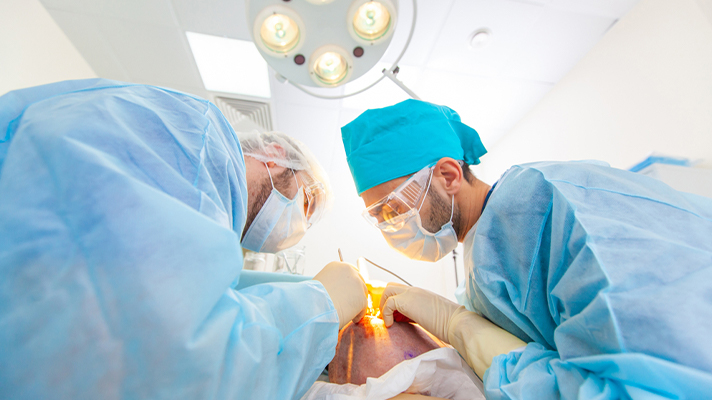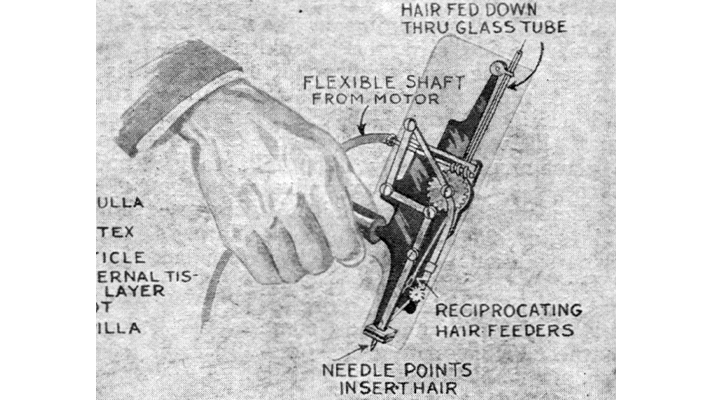
The first hair transplant surgery in history was crude at best and likely to have been performed out of desperation or ignorance. Hair transplantation as we know it today did not truly begin until the 20th century, and the outcomes are believed to have been poor.
Today, we have world-class hair transplant clinics, such as Estepalace, that have a 98% success rate. The times have changed, poor outcomes after a hair transplant surgery are now as scarce as hen’s teeth.
If you want to learn more about the history of hair transplant surgery and how it has improved over the years, continue reading.
ALSO CHECK: 5 Tips for Finding the Right Hair Transplant Treatment for Your Budget
What is a Hair Transplant?
Although it may sound self-explanatory, a hair transplant can simply be defined as a plastic surgery procedure that is used to treat hair loss. Hair follicles are moved from one area with adequate hair growth (known as a donor site) to an area that has lost hair.
Hair transplants are usually associated with head baldness, but the procedure can also combat baldness on the chest, and chin and it can restore eyelashes and eyebrows.

Follicular Unit Extraction (FUE) and Follicular Unit Transplantation (FUT) are the two techniques used in the hair transplant procedure. The FUE method involves harvesting single hair follicles from the donor area and transplanting them in the bald area, whereas, in the FUT technique, the follicles are grafted as a barnet.
Depending on the technique recommended by your surgeon, hair transplant surgery usually takes between 4 and 12 hours.
Not everyone is an eligible candidate for this surgical procedure, one has to first have a donor area in any part of his/her body. People who usually form keloid scars after an incision may have some complications that may negatively affect the surgery results.
The First Hair Transplant Surgery
There is no consensus among historians as to when the first hair transplant surgery was performed. One side is of the view that the first hair transplant surgery was pioneered by a Japanese dermatologist in 1939. The other side believes that the first hair transplant surgery for male pattern baldness was performed by Dr. Norman Orentreich in 1952 in New York City.

Despite this dispute, both sides believe that hair transplant surgery has been around for more than five decades. Historians also agree that this transplantation of hair has been soaring and evolving over the years, thanks to the advent of the internet. Nowadays it has become much safer and it is not even as painful as it used to be in the early days.
Refining the Hair Transplant Technique
As mentioned above, the advancement of technology has bettered and refined hair transplant techniques. Some of the hair transplant technology that has helped to refine this surgery technique are as follows:
Direct Hair Implantation: A tool called Choi Implanter Pen removes the hair follicles one by one, which will then be inserted into the bald or thin areas of the scalp. This procedure might take longer since efficiency is a key factor, and only one surgeon will be performing it with the use of the implanter pen.
Robotic Hair Restoration: The robot’s stereoscopic vision system uses artificial intelligence to detect the most suitable hair follicles to harvest and to be implanted. Once detected, these hair follicles will be gathered precisely to ensure a more natural-looking result, leaving the area without any trace of scars.
Follicular Unit Extraction: FUE transplant uses a tiny cutting machine to remove hair follicles individually from a part of the scalp covered with hair. Thereafter, a fine blade will create small sites on the bald area in which the hair grafts will be planted.
Hair Transplant Technique Right Now
Today, hair transplant surgery is normally performed by a dermatological surgeon or a hair transplant specialist. Depending on the type of technique, the hair transplant surgery takes between 4 and 12 hours. But before it commences, the patient will be examined and some tests will be done to see if she has HIV or Hepatitis C in her system. The tests are done to protect the medical staff involved in the surgery.
What follows after the surgery is a discussion between the patient and the surgeon. The main point of discussion is the patient’s expectations as well as the overall procedure — this discussion is as important as the procedure itself because it makes sure that both the surgeon and the patient are on the same page.
Once the discussion is over, the surgeon will do some drawings which are aligned with the patient's face. Each each has a different face shape, so the surgeon does the drawings with extra care.
The patient is then given local anesthesia to make the scalp numb so that there won’t be any pain felt. Soon after the anesthesia kicks in, the surgeon will begin the process of harvesting hair follicles from areas with sufficient hair growth or the donor site. As the surgeon goes on with the harvest, the patient won’t feel anything, not even slight pain.
What follows next is the opening of the recipient area —a bald area that will receive the grafts. By opening the recipient area, the surgeon will make tiny incisions and the harvested hair follicles are then planted upright.
Once the transplantation has taken place, the treated area will be carefully bandaged to avoid infection or any potential bleeding.
Learn more about Hair Transplants in Turkey by comparing costs and reviewing the clinics and doctor
By Kubilay Aydeger - Medically reviewed by Dr. Mehmet Dogruer, on Mar 30, 2024

















































Take The First Step Get Started!
Our team will dedicate their effort and time to help you choose the clinic best for you. Our goal is not just to find ‘a doctor’ for you, but to find ‘the right doctor’.








